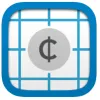
Digital Citizenship Week is October 20–24!
Join teachers worldwide to promote a healthy, positive approach to media and tech.
Take a look inside 5 images
Money Pieces, by MLC
Pros: A creative teacher can develop fun, real-life problems for kids to solve.
Cons: Limited number of tools and features creates a basic experience.
Bottom Line: These money manipulatives deliver an easy-to-use experience, but a lack of activities make it better for teacher-guided demonstration.
Elementary teachers will love Money Pieces, by MLC as a demonstration tool for modeling currency problems either as a whole group with the web app or in small groups on the iPad. Money Pieces can be used for rotated centers. If a teacher has created a grouping of coins, then each group visiting that center could display an equivalent value using different coins and cover their creation with one of the offered shades. Teachers who employ class currency can also use this tool for students to display their totals and use the app to prove they have enough money to exchange for their token at the class store. The area tool is a smart addition for extending currency lessons to upper elementary grades, as the visual representation of values is perfect for modeling fraction or decimal conversions. Kids can model borrowing for subtraction by breaking down values using the exchange tool and regroup to larger pieces to demonstrate equivalent values.
Money Pieces, by MLC offers on-screen currency manipulatives (available as a free iPad or web app). Access images of U.S. coins as well as a dollar and choose between the standard view or the area model. The area model displays rectangles, which represent the value of each piece in terms of cents. Clear directions for using basic tools such as grouping, duplicating, and writing can be found in the information section. To hide images that can be revealed in a click, use the shade tool. Make an easy conversion with the exchange tool; this tool will exchange selected items for a coin or dollar of your choice. Writing or typing equations on the screen adds a layer to help explain and understand.
Money Pieces, by MLC seems to be designed with teacher demonstration in mind, however, over time and after given examples and guided instruction, students may be able to use the app independently to model problems. The youngest of kids will need to rely more on classroom teacher direction, while upper elementary students can confidently use the app to find their own creative solutions. Although the exchange tool easily models correct conversions, the calculation is completed by the app instead of allowing for student investigation. The side panel only identifies value as whole number cents and doesn't have a toggle to display the values as a decimal part of a dollar. This feature limits use to the lower elementary grades.













